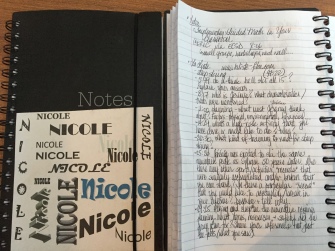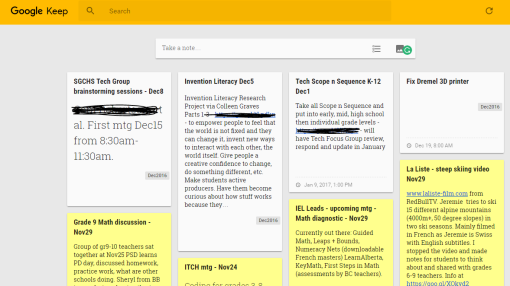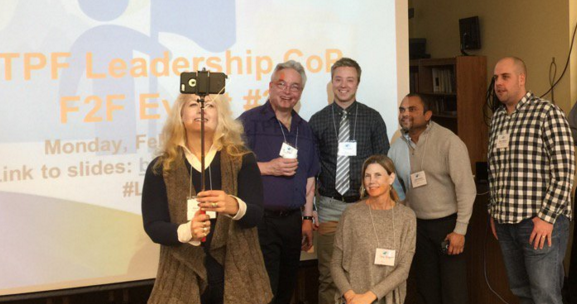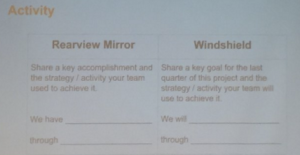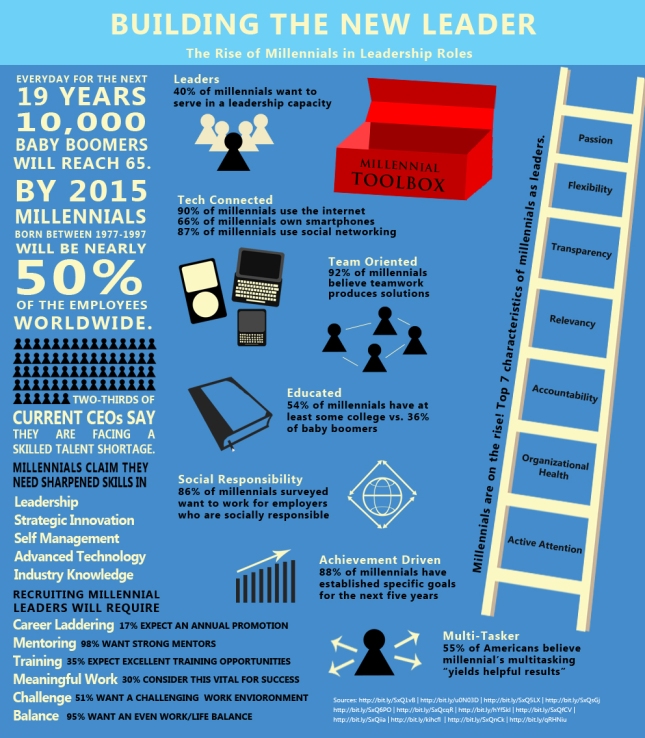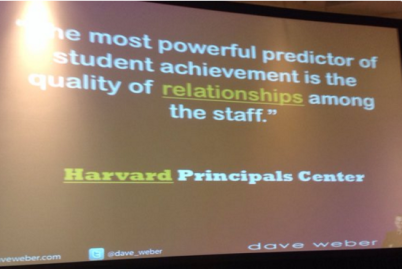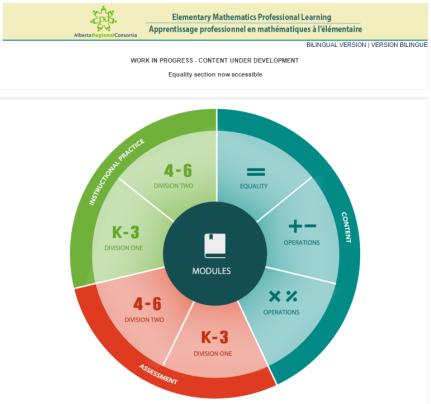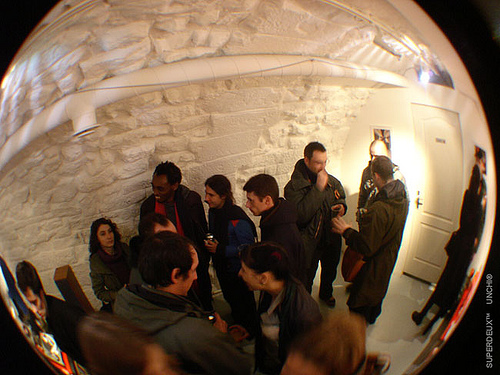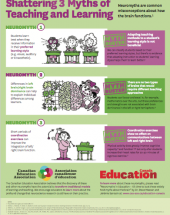Notes, note-taking, messages, information – it’s all important at different times throughout my day and work week. I use all sorts of tools to take notes, but for the short ones, like a quick stand up meeting, a voicemail, phone call or quick “to do” list, I have relied on a physical notebook for the work that I do.
Sure, I use GSuite applications and Notes iOS app on my smartphone and laptops, but my “go to” note taker has been the 9′ x 6′ (23cm x 15cm) notebook that I use each school year. Just like my previous teacher notebooks, when I was in the classroom, this one is in paper form and stays in my office. However, lately I have noticed that I want something more available to me, whenever the need arises. I turned to Google Keep for this.
Being a school division that uses the Google Suite of Applications, it was an easy tool to turn to. I’ve dabbled with it, seen other teachers use it effectively with their students, but I did not quite have a continual and mindful purpose in using it.
Here’s how I’ve started to use Google Keep:
- in Google Chrome settings > on startup > add Google Keep tab to the “open specific page or set of pages” during start up so it is ready for me to review when I sign in.
- install Save to Google Keep chrome extension for this items of interest that I’d like to look further into (otherwise I use the Diigo chrome extension for blog posts, larger information for later use (no time limit).
- use the Google Keep iOS app on my smartphone. I love the audio note feature here as it keeps the audio while also providing a transcript.
- use the Google Keep iOS app on my smartphone to make a drawing. Whether it’s a quick description or a math problem, I’ll have it saved for later use.
- within GKeep, create labels. Right now, I’m using monthly labels and color backgrounds. Gives me a quick overview of what’s occurred or occurring in a specific month.
- within GKeep, you can easily add collaborators or save to a Google Doc. Information doesn’t just have to reside with me, crowd sourcing is easy here.
- within GKeep, the Remind Me feature is getting a lot of use. Now I don’t have to highlight or sticky note my notebook to ensure things get done. I do use Google Tasks within my Google Calendar so this remind feature is fantastic. The reminder can be set for a date/time or even a location.
- within GKeep, adding images, making lists, or just typing notes gives me some creative writing choices.
- within GKeep, you’ll never lose a note. Just search for it! It even uses OCR so you can take a picture of a page with text (textbook, magazine article, etc.) which will also be searchable.
After a couple of weeks, my digital notetaking is doing well. I do scribe some items in my notebook and transfer them to GKeep. I think that after Christmas Break I will “hide” my print notebook whereby I will need to use GKeep exclusively. We’ll see how that goes!
